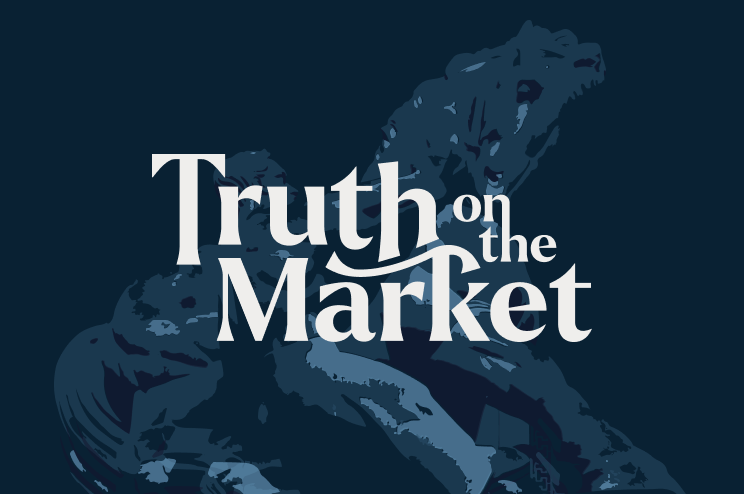Amazon-Whole Foods symposium wrap-up
On Tuesday, August 28, 2018, Truth on the Market and the International Center for Law and Economics presented a blog symposium — Is Amazon’s Appetite Bottomless? The Whole Foods Merger After One Year — that looked at the concerns surrounding the closing of the Amazon-Whole Foods merger, and how those concerns had played out over ... Amazon-Whole Foods symposium wrap-up
The Amazon-Whole Foods merger: Natural and organic competition in the evolving grocery industry
What actually happened in the year following the merger is nearly the opposite: Competition among grocery stores has been more fierce than ever. “Offline” retailers are expanding — and innovating — to meet Amazon’s challenge, and many of them are booming. Disruption is never neat and tidy, but, in addition to saving Whole Foods from potential oblivion, the merger seems to have lit a fire under the rest of the industry. This result should not be surprising to anyone who understands the nature of the competitive process. But it does highlight an important lesson: competition often comes from unexpected quarters and evolves in unpredictable ways, emerging precisely out of the kinds of adversity opponents of the merger bemoaned.
Whole Foods? Seriously? Why Are We Talking About Whole Foods?
So why this deal, in this symposium, and why now? The best substantive reason I could think of is admittedly one that I personally find important. As I said, I think we should take it much more seriously as a general matter, especially in highly dynamic contexts like Silicon Valley. There has been a history of arguably pre-emptive, market-occupying vertical and conglomerate acquisitions, by big firms of smaller ones that are technologically or otherwise disruptive. The idea is that the big firms sit back and wait as some new market develops in some adjacent sector. When that new market ripens to the point of real promise, the big firm buys some significant incumbent player. The aim is not. just to facilitate its own benevolent, wholesome entry, but to set up hopefully prohibitive challenges to other de novo entrants. Love it or leave it, that theory plausibly characterizes lots and lots of acquisitions in recent decades that secured easy antitrust approval, precisely because they weren’t obviously, presently horizontal. Many people think that is true of some of Amazon’s many acquisitions, like its notoriously aggressive, near-hostile takeover of Diapers.com.
Are the antitrust laws any defense to the real dangers of mega-mergers and big technology power aggregation?
One year ago, Amazon acquired Whole Foods in a $13.7 billion deal. At the time, David Balto, a disciple of current antitrust orthodoxy, wrote: Those who are saying the Amazon-Whole Foods merger is a competition problem are leading us into the jungle without a compass and no clear objective. Antitrust law should stick to protecting consumers and ... Are the antitrust laws any defense to the real dangers of mega-mergers and big technology power aggregation?
The Amazon / Whole Foods overreaction: Antitrust populism exposed
The gist of these arguments is simple. The Amazon / Whole Foods merger would lead to the exclusion of competitors, with Amazon leveraging its swaths of data and pricing below costs. All of this begs a simple question: have these prophecies come to pass? The problem with antitrust populism is not just that it leads to unfounded predictions regarding the negative effects of a given business practice. It also ignores the significant gains which consumers may reap from these practices. The Amazon / Whole foods offers a case in point.
It’s Not Time To Panic About Amazon’s Purchase of Whole Foods. Yet.
Even with these caveats, it’s still worth looking at the recent trends. Whole Foods’s sales since 2015 have been flat, with only low single-digit growth, according to data from Second Measure. This suggests Whole Foods is not yet getting a lift from the relationship. However, the percentage of Whole Foods’ new customers who are Prime Members increased post-merger, from 34 percent in June 2017 to 41 percent in June 2018. This suggests that Amazon’s platform is delivering customers to Whole Foods.
The Lasting Legacy of the Amazon-Whole Foods Merger Will Likely Be the Spread of Grocery Tech
The negativity that surrounded the deal at its announcement made Whole Foods seem like an innocent player, but it is important to recall that they were hemorrhaging and were looking to exit. Throughout the 2010s, the company lost its market leading edge as others began to offer the same kinds of services and products. Still, the company was able to sell near the top of its value to Amazon because it was able to court so many suitors. Given all of these features, Whole Foods could have been using the exit as a mechanism to appropriate another firm’s rent.
Amazon/Whole Foods: What Me Worry?
Brandeis is back, with today’s neo-Brandeisians reflexively opposing virtually all mergers involving large firms. For them, industry concentration has grown to crisis proportions and breaking up big companies should be the animating goal not just of antitrust policy but of U.S. economic policy generally. The key to understanding the neo-Brandeisian opposition to the Whole Foods/Amazon mergers is that it has nothing to do with consumer welfare, and everything to do with a large firm animus. Sabeel Rahman, a Roosevelt Institute scholar, concedes that big firms give us higher productivity, and hence lower prices, but he dismisses the value of that. He writes, “If consumer prices are our only concern, it is hard to see how Amazon, Comcast, and companies such as Uber need regulation.” And this gets to the key point regarding most of the opposition to the merger: it had nothing to do with concerns about monopolistic effects on economic efficiency or consumer prices. It had everything to do with opposition to big firm for the sole reason that they are big.
Amazon-Whole Foods: The Speculation Then, the Evidence Today
Carl Shapiro, the government’s economics expert opposing the AT&T-Time Warner merger, seems skeptical of much of the antitrust populists’ Amazon rhetoric: "Simply saying that Amazon has grown like a weed, charges very low prices, and has driven many smaller retailers out of business is not sufficient. Where is the consumer harm?" On its face, there was nothing about the Amazon/Whole Foods merger that should have raised any antitrust concerns. While one year is too soon to fully judge the competitive impacts of the Amazon-Whole Foods merger, nevertheless, it appears that much of the populist antitrust movement’s speculation that the merger would destroy competition and competitors and impoverish workers has failed to materialize.
Amazon and Whole Foods, Historically Considered
Viewed from the long history of the evolution of the grocery store, the Amazon-Whole Foods merger made sense as the start of the next stage of that historical process. The combination of increased wealth that is driving the demand for upscale grocery stores, and the corresponding increase in the value of people’s time that is driving the demand for one-stop shopping and various forms of pick-up and delivery, makes clear the potential benefits of this merger. Amazon was already beginning to make a mark in the sale and delivery of the non-perishables and dry goods that upscale groceries tend to have less of. Acquiring Whole Foods gives it a way to expand that into perishables in a very sensible way. We are only beginning to see the synergies that this combination will produce. Its long-term effect on the structure of the grocery business will be significant and highly beneficial for consumers.





